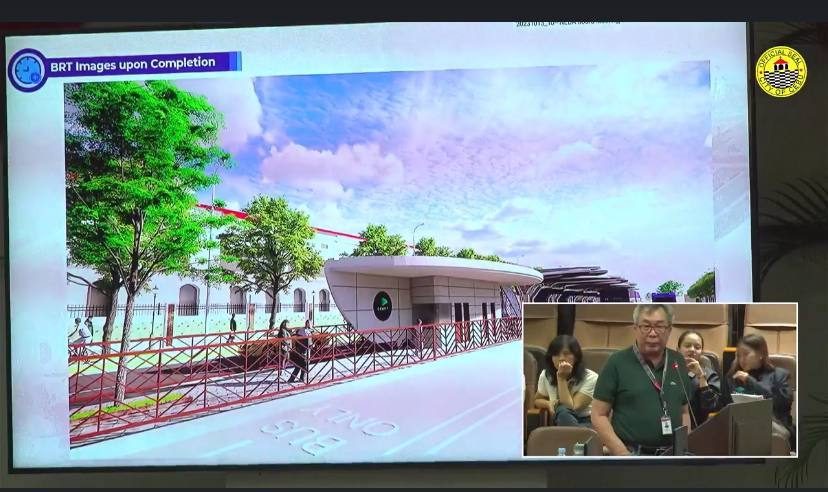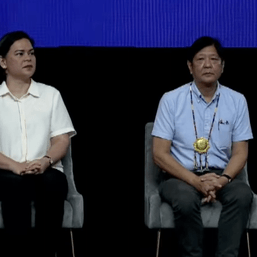SUMMARY
This is AI generated summarization, which may have errors. For context, always refer to the full article.

CEBU, Philippines – The Department of Transportation (DOTr) plans to partially operate the Cebu Bus Rapid Transit (BRT) once Package One of the mass transport package is completed by the second quarter of 2024.
Norvin Imbong, deputy project manager for systems and stakeholders relations of the (DOTr), said this will run from the Cebu South Bus Terminal to the Cebu Provincial Capitol in uptown Cebu City via Osmeña Blvd, covering a stretch of 2.38 kilometers.
This was disclosed by Imbong to the Cebu City council during an executive session on Wednesday, February 7, 2024.
“Package One is supposed to be done by the fourth quarter of 2023. But because of the delays and the problems during the construction, we are projecting this to be done in the second quarter of 2024,” Imbong said.
Among the challenges in the implementation of BRT civil works are the acquisition of road-right-of-way (RROW) and the possible demolition of two skywalks along Osmeña Boulevard that are within the BRT route.
Imbong and other representatives of the DOTr and the National Economic and Development Authority (NEDA) appeared before the council on Wednesday, following a request for the BRT proponents to appraise the council of the final route of the BRT and whether or not NEDA has given its nod to the route revision.
The Cebu BRT project – which traverses the cities of Cebu and Talisay, and other towns of Cebu Province – is divided into four construction packages for implementation. Most of the project’s components are located in Cebu City.
The Cebu BRT is one of the projects of the national government aimed at providing “affordable, reliable, efficient, and safe,” public transportation in Metro Cebu. (READ: Cebu City: Too many private vehicles, too few public transport)
It had its ceremonial groundbreaking on February 27, 2023, with the Package One contract awarded to Hunan Road and Bridge Construction Group Co. Ltd. in late 2022.
Package 2
Imbong said they are now starting with the procurement of Package 2 and have already started reaching out to more companies that will be participating in the bidding process, land acquisition, resettlement, and social management.
Package 2 of the BRT involves the South trunk – from the South Road Properties to Mambaling via N. Bacalso Avenue – while Package 3 refers to the BRT’s North trunk – from Capitol to North Escario to Gorordo Avenue to Arch. Reyes Avenue to IT Park.
“We have the preliminary works on this. We are partnering with the Department of Public Works and Highways (DPWH) for the acquisition of the lots affected along the national road, and with the Cebu City government for the lots affected by the city roads,” Imbong said.
Imbong said once they are able to procure for Packages 2 and 3, hopefully by the third quarter of 2024, they can already start civil works. Once Package 2 is completed, BRT will start its second partial operation.
As for the implementation of Package 4 (Bulacao to Mambaling), negotiations are ongoing with their detailed engineering design consultant.
Imbong said the civil works for Package 4 are expected to commence during the third quarter of 2025 and are expected to be completed within a year-and-a-half. Following a one-year defects liability period, the entire BRT system operations are expected to begin in the first quarter of 2027.
‘Still viable’
Meanwhile, the BRT project, despite delays in completion, remains a crucial and economically viable component of Cebu’s mass transport solution, according to a NEDA local official.
On Wednesday, NEDA 7 director Jennifer Bretaña told the council that the Investment Coordination Committee (ICC) of its central office recommended approval of the request for restructuring the BRT project in October 2023 because it “still continues to be economically viable.”
This was in response to Councilor James Cuenco, transportation committee chairman, who inquired about the economic viability of the BRT despite its cost soaring to P28 billion in 2023 from the initial P10 billion approved in 2014.
Cuenco highlighted the traffic that will be caused by the construction of BRT Package One in Cebu City. He said it would have been better if other components of the integrated and intermodal transportation master plan for Metro Cebu (like the Metro Cebu Expressways or MCE) had been implemented first before initiating work for the BRT.
“Sana, since this is a master plan, inuna muna ‘yung project that will first decongest (traffic) because sabay-sabay kasi ang nangyayari ngayon eh. We already have too much traffic in Cebu City tapos dinagdagan pa ng BRT,” Cuenco said. (Since this is a master plan, they should have implemented first the project that will decongest (traffic) instead of doing things simultaneously. We already have too much traffic in Cebu City and this will be made worse by the BRT.)
In September 2022, then-Cebu City Transport Office executive director Paul Gotiong was quoted as saying: “We have the highest trips per day [in Metro Cebu] with around 80% of private vehicles occupying our roads and (only) 10% of that are coming from our public transport.”
Bretaña said the MCE is already ongoing and is being undertaken by the DPWH. She admitted delays in project implementation caused primarily by RROW acquisition.
Bretaña said benefits that could outweigh costs include reduction in travel time, savings in vehicular operating costs, and the monetary value of reduced gas emissions.
The DOTr’s request for a change in scope, increase in cost, extension in implementation period, and extension of the validity of the loan for the project and its restructuring had been approved last October 5, 2023 by the ICC chaired by the finance secretary.
The NEDA board, chaired by President Ferdinand Marcos Jr., confirmed the approval on October 13, 2023. According to Bretaña, lenders have always been consulted whenever there are changes in terms of cost and extension of the loan.
Funding source
The P28.7-billion funding requirement for the BRT will be covered by loan proceeds totaling P10.867 billion and a Philippine government counterpart of P17.912 billion.
Of the loan proceeds, P6.380 billion is from the World Bank International Bank for Reconstruction and Development (WB IBRD); P1.378 billion from the Clean Technology Fund Grant, and P3.107 billion from the French Development Agency (AFD).
The government requested from AFD for an extension of the loan validity period from the original March 2021-March 2023 to September 2027. Likewise, the loan validity period for WBRD and CTF has been extended from June 2021 to June 2023, then again to September 2023, and finally to September 2027. – Rappler.com
Wenilyn Sabalo is a community journalist currently affiliated with SunStar Cebu and is an Aries Rufo Journalism fellow of Rappler for 2023-2024.
Add a comment
How does this make you feel?







![[Under 3 Minutes] When will we see modern jeepneys on the road?](https://www.rappler.com/tachyon/2024/04/francisco-motors-modern-jeepney-prototype-1.jpg?resize=257%2C257&crop=590px%2C0px%2C1012px%2C1012px)



![[In This Economy] Part 2 | POGOnomics: Are we banning POGOs out of fear, outrage, not rational thought?](https://www.rappler.com/tachyon/2024/06/thought-leaders-pogonomics-part-2b.jpg?resize=257%2C257&crop=292px%2C0px%2C720px%2C720px)
![[In This Economy] POGOnomics: Weighing the costs and benefits of POGOs](https://www.rappler.com/tachyon/2024/06/thought-leaders-pogonomics-part-1.jpg?resize=257%2C257&crop=279px%2C0px%2C720px%2C720px)
![[In This Economy] Is the Philippine economy stable?](https://www.rappler.com/tachyon/2024/05/philippine-economy-stable-may-10-2024.jpg?resize=257%2C257&crop=461px%2C0px%2C1080px%2C1080px)



There are no comments yet. Add your comment to start the conversation.